Text
Steps to Diffusion
What is it?
FitBit is a health company that was founded in 2007 by James Park and Eric Friedman. The duo took advantage of new wireless sensor technology to create a wide range of products that could co-exist with smartphones to track users health and activity. FitBit thrives on the attributes of compatibility and observability.
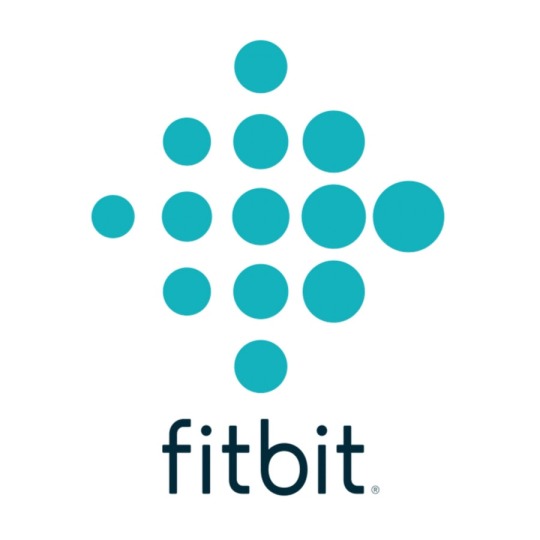
Because there are several options, users can choose the model that works best for them, and find what is compatible for their budget and lifestyle. Through the app, and as they continue to use the product, users can also observe directly how the product is impacting themselves and others. FitBit products are also fairly simplistic in design and concept, again, depending on the model. Because of the variety, it allows high tech adopters to use the newest and most advanced, while those who may be less tech-savvy to use the simpler designs without loss of function.
FitBit also was innovative in its advantages, as it allows already active users to gain an even deeper understanding of their bodies and exercise plans. It also made exercise and fitness accessible to those who may have felt shunned by the fitness community or were to scared to join a gym. By tracking steps, FitBit managed to reinvent the pedometer and get countless people moving.
Adoption
The Fitbit was a product that seemed to take off right away. Those that adapted to the technology first would have been upper middle class, athletic millennials. These products were useful for the target audience because if you are trying to live a healthier lifestyle it is helpful to have product. The Fitbit can also be seen as a status symbol, as depending on the model, they can be fairly expensive.
There's also a large portion of users that own the product that do not use it for its actual health benefits, but because the product itself is popular. Those who decide if the product adopts or not would be those that decide to buy the product, and more specifically those who are allowing the adoption of the product to happen are first the innovators, early adopters, early majority, late majority and finally laggards.

Early adopters were enthusiastically athletic individuals, especially those who participated in athletic group activities. These individuals had to be enthusiastic enough to spend a steep amount on the FitBit due to its currently niche market. According to MetaFacts’ Findings, early adopters of the FitBit, much like those of the GoPro, were the first of their age group to adopt a computer, smartphone, or tablet. Many may have already been interested in tracker products but the FitBit was an appealing new device for many reasons.
The most popular reasons seem to relate to trendiness as an accessory and features such as the ability for the hardware to hold up in a variety of environments. These early adopters influenced public opinion of the innovation with a higher than average percentage of users being early adopters. Opinion leaders played the role of motivating other potential adopters, providing educational information, and establishing brand loyalty. This brand in particular achieves this by pushing the idea of exercise in a variety of unique ways. This information is spread to consumers through a variety of channels.
Awareness
Nowadays, people are trying to become healthier. Searching for a product that will help them keep track of their progress to reach the end result they are looking for. By searching for this product, people can come across a Fitbit. As mentioned on the website “This all-day companion uses personalized reminders, coaching, music & more to help you reach your goals.”
Information about fitbit can spread quickly. They have their own Facebook, Twitter, Instagram, Pinterest, and YouTube page along with a their blog which helps spread information about their product. Will a great product, information even spreads by word of mouth.
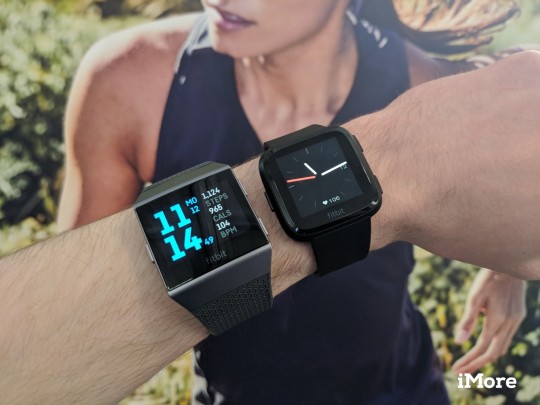
There are many gatekeepers when it comes to Fitbit. First off, people who are looking to get into shape, a personal trainer who could be using a Fitbit could suggest their customer to buy a Fitbit because it will help them show the progress they have been making. Professional athletes would be another source. There are a lot of people who look up to professional athletes. If they have something, they think it has to be a good product to have so it’s something we would like to buy. Gatekeepers towards Fitbit could be anyone that uses the product for fitness.
When it comes to how people adopt the technology, there are different levels. The three levels that would be most common for the Fitbit would be knowledge which is when a person will gain experience from the product and get to know how it works. Persuasion is another when an attitude towards the Fitbit can be positive or negative which would lead to the decision. This level will help the buyer know if they would want to have the product by learning about it and even hearing about it from others. Or they would want to go with another product because they have hear bad things about the Fitbit that to their knowledge won’t perform to their standards.
Reinvention
FitBit has seen a huge growth spurt in the past decade. When the product launched, the most popular version was the FitBit Flex, a screenless step tracker that sat inside of a rubber wristband. The original Flex showed your daily step progress with small lights, and could track sleep patterns. In 2017, FitBit released the Flex 2, which is water resistant, allowing users to track their swimming, has vibrating reminders to move, and can be worn as a wristband or pendant.
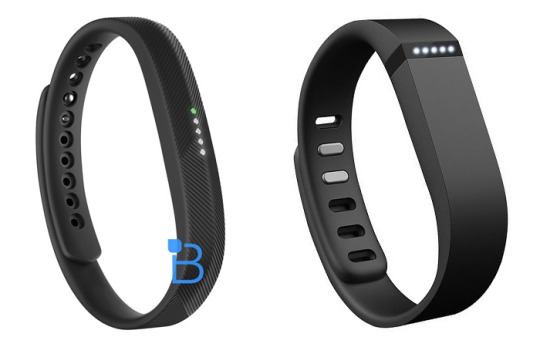
The Flex isn’t the only device that has evolved over the years. Another popular model is the Fitbit Charge, which originally replaced a recalled product. The Charge was released in 2014, and tracks sleep, steps, stairs, and distance traveled. In 2015, the Charge HR was released, which added the additional function of heart-rate tracking. The Charge 2 was then released in 2017, which has many different additional features, including sleep stage tracking, guided breathing, exercise modes, a stopwatch, the ability to receive notifications from the user’s phone, and even a vibrating alarm clock.
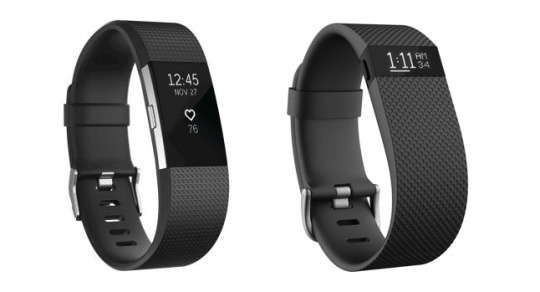
As smartwatches evolved, FitBit released several designs to keep up with the times, the most recent being the Versa, launched in April of this year. Featuring a colored touch screen, bluetooth GPS tracker, apps, music, and notifications, the Versa is also waterproof, allowing it to be worn swimming.
The FitBit app has also evolved overtime, as recent updates have allowed users to create posts and join groups, in addition to gaining badges for achievements and a place to track steps, water and food intake, and sleep. In the past eight years, FitBit has doubled their product line and streamlined their app, making fitness accessible and a social tool.
Diffusion
Diffusion is the process in which an innovation is communicated through certain channels over time among the members of a social system. Now with that being said, based on the FitBit company putting a disclaimer stating the FitBit could cause skin irritation, that could affect the diffusion of the product. For example, if I am using a FitBit, and my skin all of sudden becomes red and maybe a bit itchy, I am going to tell people I know that use one what happened, which in turn may cause them to stop using the product which would ultimately affect the diffusion of the FitBit due to what I told my friends. However, on the flip side, according to a press release by FitBit, they have over 25 million users in 2017.

They also quote: “Consumers continue to purchase and use health and fitness trackers, fueled by advanced features, engaging software and social experiences that motivate, helping to lead to positive health outcomes.” Based off of this quote, as well as the press release, it is possible to say that even in recent time the diffusion for the FitBit is going well. Which is exactly what FitBit wants us to believe. According to an article titled Tons of people are buying FitBits, but are they actually using them, they state that roughly 9.5 of 19 million users were active, and the rest hadn’t been using the device. Based of the conflicting article releases, it will be interesting to see how FitBit does in the future.
Sources
Americaninno.com, www.americaninno.com/boston/fitbit-active-monthly-users-early-adopters/.
“Breaking News Instant Updates and Real-Time Market News.” Comcast to Invest over $50B over next Five Years in Infrastructure CMCSA;CMCSK - The Fly, thefly.com/landingPageNews.php?id=2509656.
Cipriani, Jason. “Q&A: Fitbit CEO James Park Talks about the Company's Past, Present, and Future.” ZDNet, ZDNet, 16 Apr. 2018, www.zdnet.com/article/q-a-fitbit-ceo-james-park-talks-about-the-companys-past-present-and-future/.
“Find the Product That's Right for You.” Fitbit Official Site for Activity Trackers & More, www.fitbit.com/compare.
“Fitbit Community Grows to More Than 25 Million Active Users in 2017.” Fitbit, Inc., investor.fitbit.com/press/press-releases/press-release-details/2018/Fitbit-Community-Grows-to-More-Than-25-Million-Active-Users-in-2017/default.aspx.
“Fitbit Reviews.” Glassdoor, www.glassdoor.com/Reviews/Fitbit-Reviews-E500145.htm.
Goode, Lauren. “Tons of People Are Buying Fitbits, but Are They Actually Using Them?” The Verge, The Verge, 6 Aug. 2015, www.theverge.com/tech/2015/8/6/9110035/fitbit-fitness-tracker-watch-active-users-sales https://www.fitbit.com/home.
Long, Dan Owens. “3 Questions For Fitbit Investors.” Seeking Alpha, Seeking Alpha, 3 July 2017, seekingalpha.com/article/4085509-3-questions-fitbit-investors.
Peckham, James. “Best Fitbit 2018: Which Is Right for You?” TechRadar, TechRadar The Source for Tech Buying Advice, 5 July 2018, www.techradar.com/news/wearables/best-fitbit-which-is-right-for-you-1322700.
Rogers, Everett M. Diffusion of Innovation. The Free Press, 2003.
“Tag Archives: FitBit.” MetaFacts' Findings, technologyuser.com/tag/fitbit/.
Weil, Richard. “Pedometers: Get the Facts on the Types.” MedicineNet, www.medicinenet.com/pedometers/article.htm.
0 notes
Text
Electric Messages to Instant Messages
In our modern world, there are a lot of things that we take for granted. Especially in the younger generations, instant communication via the internet, such as Facebook Messenger, Snapchat, and iMessage are all means of bridging the distance between us, allowing for quick conversation. However, it wasn’t always this easy. The first step towards communication as we know it today was the telegraph, but it wasn’t always an easy road to get there.
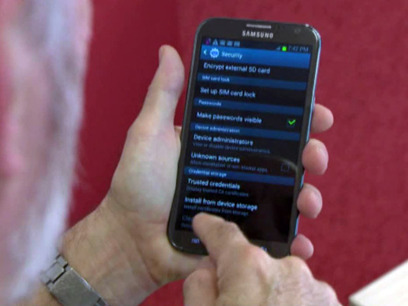
In the past, before the dawn of electricity, the main way of instant communication over distances was noise - such as bells or horns, signaling those within hearing distance about attacks or important events. Even with loud noises however, it was hard for any complex messages to travel any great distance. Other forms of communication were primarily relayed by men on horseback or on ships, however, it took anywhere from days to months for those messages to be conveyed, and often they were mis-communicated or even lost. With the recent celebration of the Fourth of July, it brings to mind one of the most famous horseback messengers - Paul Revere, with his iconic cry, “the British are coming!”
As the world and our knowledge of it grew, with it came the need for faster, more complex communications. While it would be a long time before this need was met, a monk did an experiment that paved the way for future researchers. Jean-Antoine Nollet shocked a line of monks holding connecting wires that was about a mild long. This experiment was critical to the development of the telegraph as it showed that in theory, it could be possible to transmit signals with electricity over a great distance, far faster than a rider on horseback or ship could carry them. For more information about the experiment and early electricity, check out this interesting article: "The First Shock of Electricity."
After Nollet’s experiment, the next major development was the optical / visual Telegraph, created by a pair of French inventors named Claude and Rene Chappe. They were some of the many people that failed to capture electricity for the purpose of sending messages. His very early idea was sending different “clang” messages by striking a casserole dish, which could only go about a quarter mile away. They would synchronize their clocks, and based on the timing of the “clang,” a number dictionary and a code book they translated these numbers into letters, words, and phrases. The main problem with this system was the short distance that messages were able to be sent over. On March 2, 1791, using black and white panels, clocks, telescopes and code books they sent a message through town, reaching a building 10 miles away. Later, they created a new design that did not need clocks, consisting of two small rotating arms on the end of a long rotating bar. That bar could be aligned horizontally or vertically and the smaller arms could be rotated in seven different positions, with a total of 98 different combinations. This was the very first Visual Telegraph.
Samuel F.B. Morse And Dr. Charles Jackson, took the next step in developing the telegraph by using the clicking of an electromagnets to send numbers, but this system took nine times longer to send a message. Then he came up with using a bi-signal that involved dots and dashes of what we know today as Morse code. This was then put into electrical signal so it could be translated from dots and dashes back into the original message. To watch and listen to what Morse code telegraphs sounded like, you can watch this video.

It wasn't until 1871 all the Telegraph wires of the United States were connected to a single Morse Key. Eventually, automatic telegraph machines sent messages without operators. David Hughes later invented a keyboard with alternating black and white keys, one for each letter, that was able to print characters a paper tape and it could be operated by anyone. This invention was perfected by Charles Wheatstone and later became the Wheatstone Automatic Transmitter. Later on was the harmonic telegraph invented by Elisha Gray and Alexander Graham Bell. On March 3rd 1876, he succeeded in transmitting speech for the first time, an invention that is now known as the telephone. Four years later, in 1880 there were 30,000 phones in use.
The telegraph was a revolutionary invention that created many new businesses and jobs for people. This boom in jobs and businesses is mirrored by the modern telecommunication industry. Today many telephone companies also offer internet, one of the bigger ones being the AT&T company. Even today the internet redefines the way people work and the way businesses work today. Like any new communication invention there's usually many benefits, not only through the communication aspect, but such inventions were expected to improve education, reduce social isolation and overall enhance communication.
Although other resources were implemented in developing stages, these are the resources that were vital for the final versions of the commercial telegraph and similar technological devices. Many physical resources were needed, including wire for transmission, magnetic needles for human detection of electrical changes, and galvanometers for measuring electrical currents. Earlier devices used other, often more difficult to obtain, supplies, including mercury and silk. The use of such materials in the final products supported the iron industry in terms of finances and demand, as well as other industries that the advancements depended on.
Limitations on knowledge hinder technological development, so the technical information available to the engineers was a critical aspect of these inventions. For example, according to Harvard professor R.Victor Jones, without the knowledge of frequency-division multiplexing, the telegraph technology would have lacked the ability to send more than one message per wire in the same way, using varying frequencies. Additionally, fiber optic transmission eventually allowed for sending thousands of telegraph signals simultaneously down a line using laser light signals through fiber optic cables. Pavel Schilling even implemented the binary system.
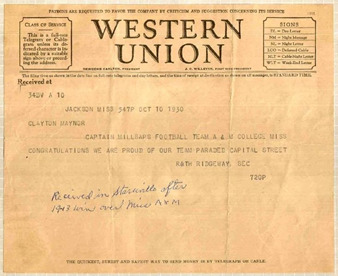
Early slang and code was implemented in lists to make communication easier. For example, from The Victorian Internet, “However, one listing of common abbreviations compiled in 1859 includes ‘1 1’ (dot dot, dot dot) for ‘I AM READY’; ‘G A’ (dash dash dot, dot dash) for ‘GO AHEAD’, ‘S F D’ for ‘STOP FOR DINNER’; ‘G M’ for ‘GOOD MORNING.’” However, all of this knowledge was never gained in the first place or rendered useless without outside support. The development process was heavily dependent on public support and funding because without enough interest and financing, projects or versions of projects are hindered or altogether rejected. Francis Ronalds and André-Marie Ampère, both developers of the telegraph around the same time period, experienced this fact when told their creations were not useful. This is not a rare experience even for engineers in the contemporary world, and can be positive or negative in extremes.
The Victorian Internet had many factors that lead to having a positive impact on society. These impacts increased socialization through cultural exchange, education, and romance. Being able to talk through Morse code to another person was much faster than relating a message from a horse. The electronic telegram allows people to speak to one another from around the world. By this new source of communication, it has resulted in an increased of social activity. These activities, explained in the Victorian Internet was where “love across the wires originated” through the romance people had from this form of communication.
From the electronic telegram, new technology evolves and became better. Industries formed and people had a greater increase in socialization. Verizon Wireless was one of those industries that allowed people to have these abilities. The chance to send messages within seconds to someone. Having the capability to talk to someone else across the world. Being able to use the interest such as Facebook to chat with friends, families, and colleagues. Lowell McAdam, Version Chairman and CEO reported, “Explosive demand for mobile data is arguably the biggest driver of growth in the technology industry today. By launching our 4G LTE wireless network, which delivers the speed and capacity required for wireless data and video, and covering 89% of the U.S. population allowed people to have the communication they need within seconds.”
However, even back in the era of the Victorian Internet there was theft and fraud, as stated in a line from The Victorian Internet “The educated criminal skims the cream from every new invention. The telegraph was no exception. It provided unscrupulous individuals with novel opportunities for fraud, theft, and deception.” (Standage 105). A key example of these mentioned in the book is horse racing. With the results of a winning race, person A could send person B the winning horse, and then person B could then put a surefire bet on the horse, winning money almost every time. This ultimately would have a negative effect on society due to the telegraph being misused for what it was intended for, thus gaining a negative reputation as people would be afraid to use it being afraid of theft or other negative things.
Similarly, to the negative effects of the Victorian Internet on society, the invention of new technologies today also has negative effects. One of the most prevalent issues with technology today is how it is affecting the day to day lives of children. According to: Americans and Technology: The Good and The Bad, American children spend about 40 hours a week using some sort of technological device. If you consider in a child going to school for six hours, sleep for about 8 hours, and then the average 6-8 hours they spend on a device, that takes up about 20-22 hours of their day. It is no wonder American kids and America as a whole are becoming more and more obese, as you can see from the image, America has the most obese children. We spend so much time with technology that doesn’t leave much time to have an active life.
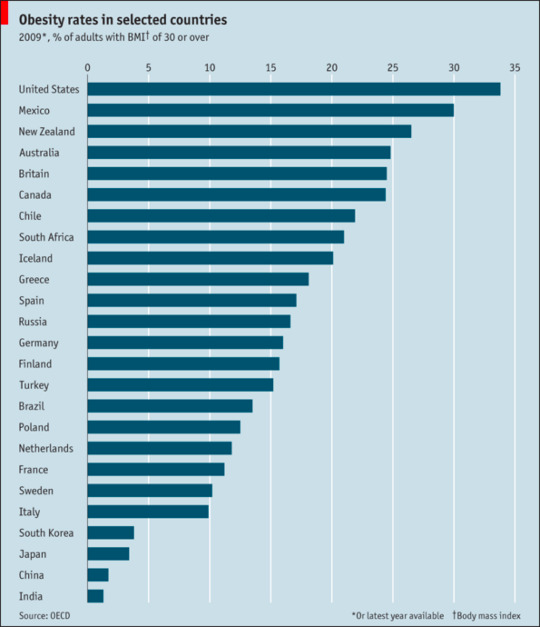
Despite the negatives, there are endless possibilities thanks to our modern technology. Even with all of the progress we’ve made, technology slows no sign of slowing down. Communication is something that connects us all, and the instruments that connect us are still an essential part of our lives. What do you think will come next? And what, like the pony express or telegraph, will be outdated before we know it?
Sources
http://americancensorship.org/americans-technology-good-bad/
https://www.verizon.com/about/sites/default/files/vz_ar_2012.pdf
https://aehistory.wordpress.com/1837/10/08/1837-first-commercial-telegraph/
https://www.telegraph.co.uk/news/science/science-news/4750776/The-first-shock-of-electricity.html
https://www.youtube.com/watch?v=UWKsgDqa9T8
https://www.famousscientists.org/andre-marie-ampere/
http://uudb.org/articles/francisronalds.html
The Victorian Internet, Tom Standage
0 notes